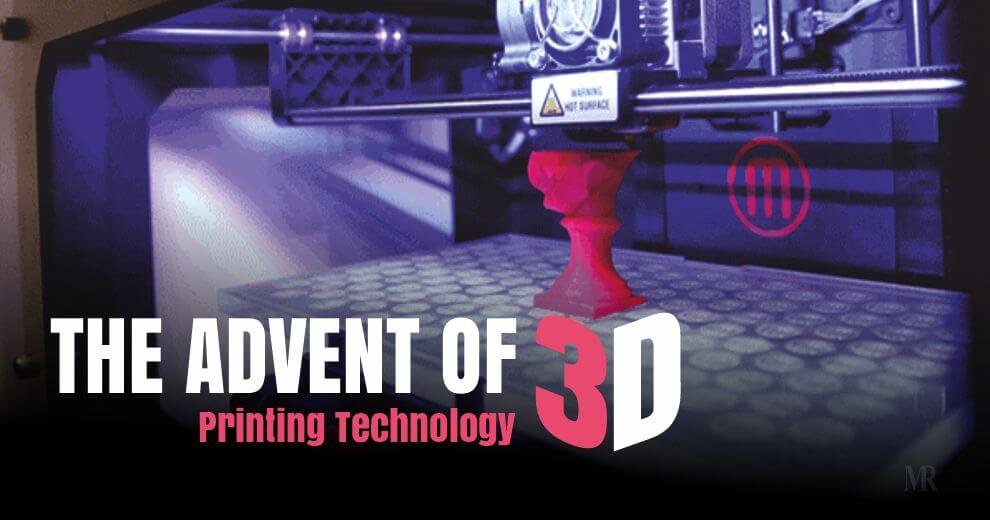In the not-to-distant future, common household mishaps—a broken coffee mug or a lost screw—won’t require a trip to the hardware store. Instead, people will just click the correct template on their home 3-D printer and manufacture a replacement themselves. Imagine if blind and visually impaired people can “see” photographs. In fact, a Californian company Pirate3D has already made it possible via an affordable home printer called the Buccaneer. It allows users to print a 3D version of a photograph and visualize it via touch. The amazement doesn’t end here: what if an expectant mother can create a 3D model of her unborn baby? The technology behind 3-D printing is moving fast, and it may be among the next disruptive forces in fields from medicine to defense to manufacturing to home renovation.
Replacing Traditionalism
3-D printing is the process of creating three-dimensional objects from a digital file. It starts with a virtual design of the object to be printed—computer software can scan existing items or allow users to create a unique design. The computer then takes that model and slices it into thousands of horizontal layers. The printer reads each one of those slices and prints it out layer to build a solid three-dimensional object. This process is called additive manufacturing. Where traditional manufacturing shaves material away from a large block, creating waste, 3-D printers add layers of material that accumulate into the desired design, reducing the amount of waste.
The aviation industry is already using 3-D printing technology to manufacture thousands of replacement parts. Major companies such as General Electric have invested heavily in technology and are looking for ways to incorporate it into their production processes. On the consumer level, machines that print common household items or custom decorative fixtures could become the next widely used appliance. Big box and home improvement stores have started selling home 3-D printers at prices that make them accessible to many consumers.
Digital Craftsmanship
Many early model 3-D printers built objects mostly from strong plastics, but some machines can use powered metals, glass, ceramics, or biological materials that bind together when exposed to the right type of heat or light. This process, known as laser sintering, that allows printing of a wider array of materials—from food products, such as the icing on an elaborate cake, to bone and cell tissue, which researchers say could revolutionize regenerative medicine.
As technology advances, it could create ease and precision of design and may well revolutionize manufacturing practices around the world. Additive manufacturing could reduce reliance on human labor and may even recognize global manufacturing markets. 3-D printing technology could also open a whole new world of counterfeiters—not to mention the disturbing idea of printing homemade plastic guns that could evade metal detectors. Could it also spell the end of craftsmanship? Perhaps it is just craftsmanship of a new sort.
The Science behind 3-D Printing
The technology that makes 3-D printing possible has roots in experiments that led to the development of photography 200 years ago. Scientists realized that certain materials would undergo chemical changes when exposed to light.
One common method of 3-D printing called stereolithography was first developed in the 1980s. It creates objects by exposing light-sensitive polymers, called photopolymers, to ultraviolet rays from a laser. Photopolymers start as a combination of several substances: a large molecule that may be acrylic or a form of plastic; a small molecule to keep the mixture in an initial liquid state; and photoinitiator that, when exposed to the light of the right wavelength, causes the other two substances to bind into a solid form.
A vat of this substance is placed on a movable tray inside a printer, and then a computer-guided UV laser traces thin layers of the substance. The tray then shifts down to allow for a second layer of photopolymer. This process is repeated until the full object has taken form.
Medical Applications
Researchers working in the medical field rely on one of 3-D printing’s greatest strengths: customization of complex low-quantity items. Low cost in manufacturing today typically stems from mass production; customization is expensive. However, with the help of digital blueprint, printing a metal nail is just as straightforward as printing a miniature replica of Rodin’s “The Thinker.”
3-D printers can be used to custom-fit hearing aids, casts, and other medical devices. Doctors already use 3-D processes in reconstructive surgery, and the creation of skin grafts and personalized organs for transplant could be a reality in the future. In 2014, scientists at the Massachusetts Institute of Technology printed miniature livers about a thousandth the size of the average human liver. While technology has a way to go, researchers hope eventually to use printed organs for transplants and to screen the safety and effectiveness of drugs before they are tested in humans.
3-D printed prosthetics can be customized to fit the weather’s body, and may eventually be cheaper and more durable than traditional prosthetics. Combined with advances in robotics, these limbs could even move with impulses from the wearer’s nerves.
Also read,
Read Full Magazine: Mirror Review’s Top 3D Printing Companies 2020















